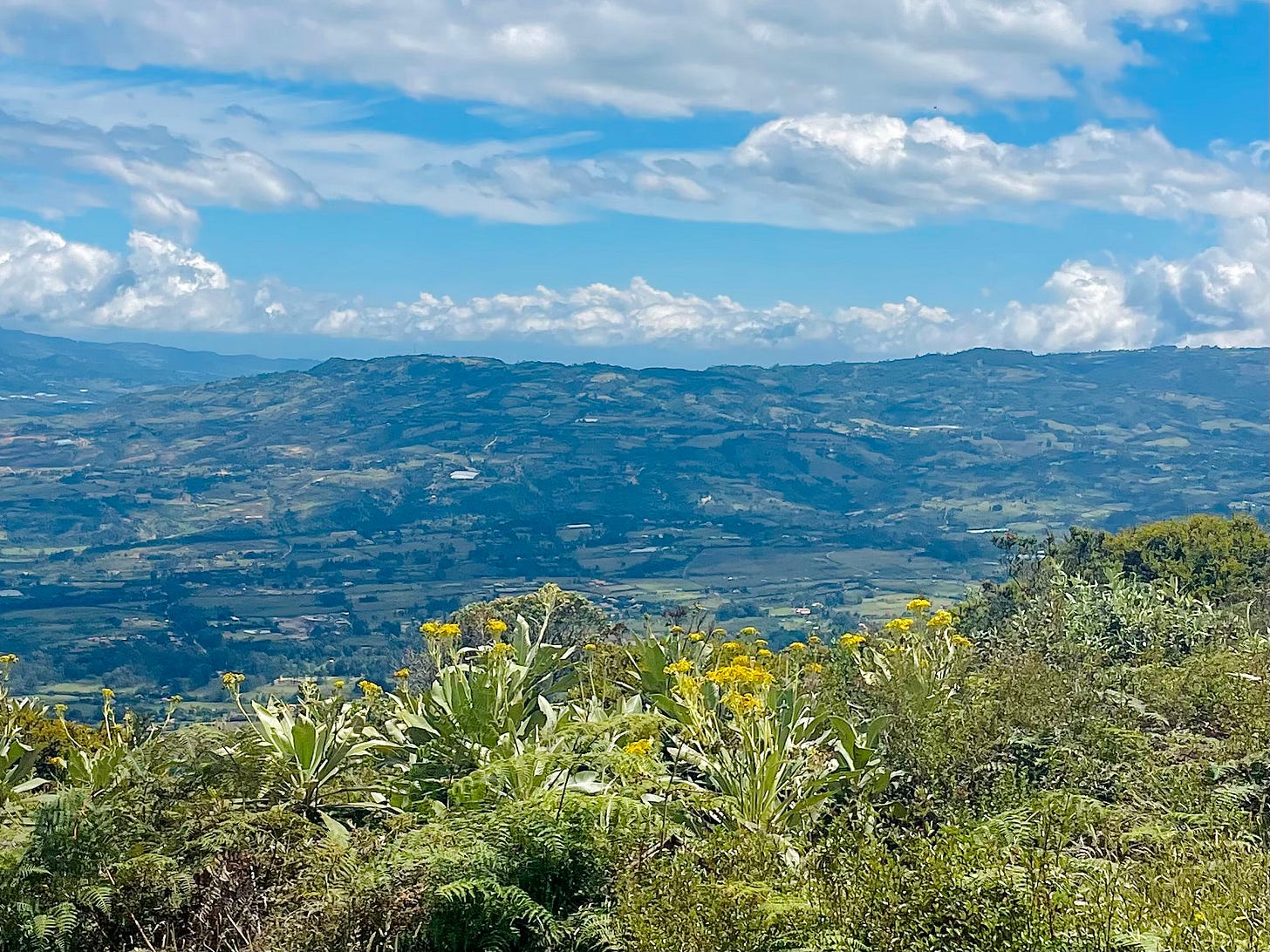The Fragile Fate of Andean Monks
A Keystone Species Responsible for Water Sustainability Is in Peril
When I moved from Colorado to Florida, I lost a huge part of myself. In the ten years I spent there I had become an avid trail lover, and giving up life in the high country was not an easy decision. Beyond the obvious cardiovascular benefits, the mountains strengthened my identity. Hiking – the act of putting one foot in front of the other – was a metaphor for my long PhD journey. It was an exercise in perseverance, devotion, and delayed gratification. The in-the-moment suffering was inevitably followed by amnesia and the desire to do it all over again.
There is nothing quite like coming upon the grandest overlook after hours of staring at the rocks under your feet. There, at the top, you gain perspective. Every summit greets you with a rush of mixed emotions: pride, awe, and the humbling feeling of being tiny and insignificant. While chasing this rush, I discovered the austere remote corners of the state, tasted the crumbly reddish sandstone and the vertical sheets of granite, and fell in love with the nuances of the afternoon light, the fading layers of gray, the shadowy valleys, and protruding summits covered in white splotches of snow.
So, after years of living in a state where the horizon line is completely flat, I’m elated to be back in a place with topography. Here in Colombia, the mountains look completely different – lush green, covered with a soft impenetrable blanket of native forest cover. The iconic green hills of Bogotá and Medellin welcome you to this equatorial country like a warm mother’s hug. But about 3 hours North of Bogotá, in the state of Boyacá, the hills take on a different form reminiscent of the familiar dry mountains of Colorado. Instead of the dense native forest, what you will find here is a high-altitude tundra ecosystem called páramo.
The páramo is a landmark of the Northern Andes. Located between 9,200 and 14,800 feet above sea level, these ecosystems are unique to Colombia, Venezuela, and Ecuador. Here, the combination of high altitude, strong equatorial sun, and seasonal moisture creates a unique biome of grasses and shrubs. At this elevation, the weather changes extremely fast and the plants have to evolve to adapt to the harsh environment. Not surprisingly, páramos are "evolutionary hot spots", some of the fastest-changing regions of the Earth.
This alpine landscape features many unique species of plants, the most iconic and enigmatic of which are probably frailejones, or "big monks". These giant subshrubs tower up to several meters in height and look like miniature palm trees. Their leaves are arranged in rose-like spirals and covered with dense white hairs to help reflect the harsh UV rays and soak up the moisture from the passing clouds. When the old leaves die, they shrivel up around the trunk instead of being shed – covering the thick stalk in dragon scales. At night, the monks curl in their leaves to protect the young, gentle petals in the center of the rosette from freezing. Once in a while, the plants sprout a beautiful yellow daisy-like flower. The little pop of color brightens up an otherwise austere landscape and attracts hundreds of species of insects.
But the most amazing feature of these plants is not their outlandish looks – it’s their water conservation ability. As the rain clouds roll over the hills, the frailejones literally soak up the moisture from the air. Instead of using it for growth, the plants deposit up to 80% of the water into the ground, trapping it in the spongy structure of moss, roots, and peat, which prevents runoff floods. There, the water gets filtered and deposited in subterranean aquifers that feed the nearby farmland and the big cities, such as Bogotá in Colombia and Quito in Ecuador.
Thus, these selfless water-bearing monks have been quenching the thirst of millions of people who have been living in the high Andes for centuries. There are 143 known species of frailejones, of which Colombia is home to at least 88 and probably more still waiting to be discovered. But these enigmatic plants are under threat of extinction from farming, mining, urban expansion, and climate change. They have also come under attack from invasive insects and fungi that have spread from lower elevations due to the warming temperatures in the area.
It saddens me to think that these beautiful companions that I’ve encountered on my hikes may not be there next time I come to visit. But even more, it concerns me: what will happen to the environment if they disappear? Will some other species fill the ecological niche? Or will the misty, pale green mountains of Colombia become dry and weathered, like those of Chile and Peru, without the big monks watching over them? And what will happen to the people that drink from the well of this abundant Colombian land?
These types of questions are nearly impossible to answer ahead of time, as ecologies and environments are complex and influenced by many, often contradicting, factors. But I would listen when scientists sound the alarm about potential extinction: frailejones, just like wolfs or mammoths, are a keystone species, which means that they are essential for shaping the land and even the climate of the region. There is a theory that the extinction of mammoths contributed to the disappearance of once rich and thriving Siberian and Canadian savannas, taking with them other prehistoric animals such as saber-toothed cats, the American Lion, and the Short-Faced Bear.
Let’s hope that in the chance of cascading extinction events, we are not in line after the monks.






So beautifully written warning for all of us...